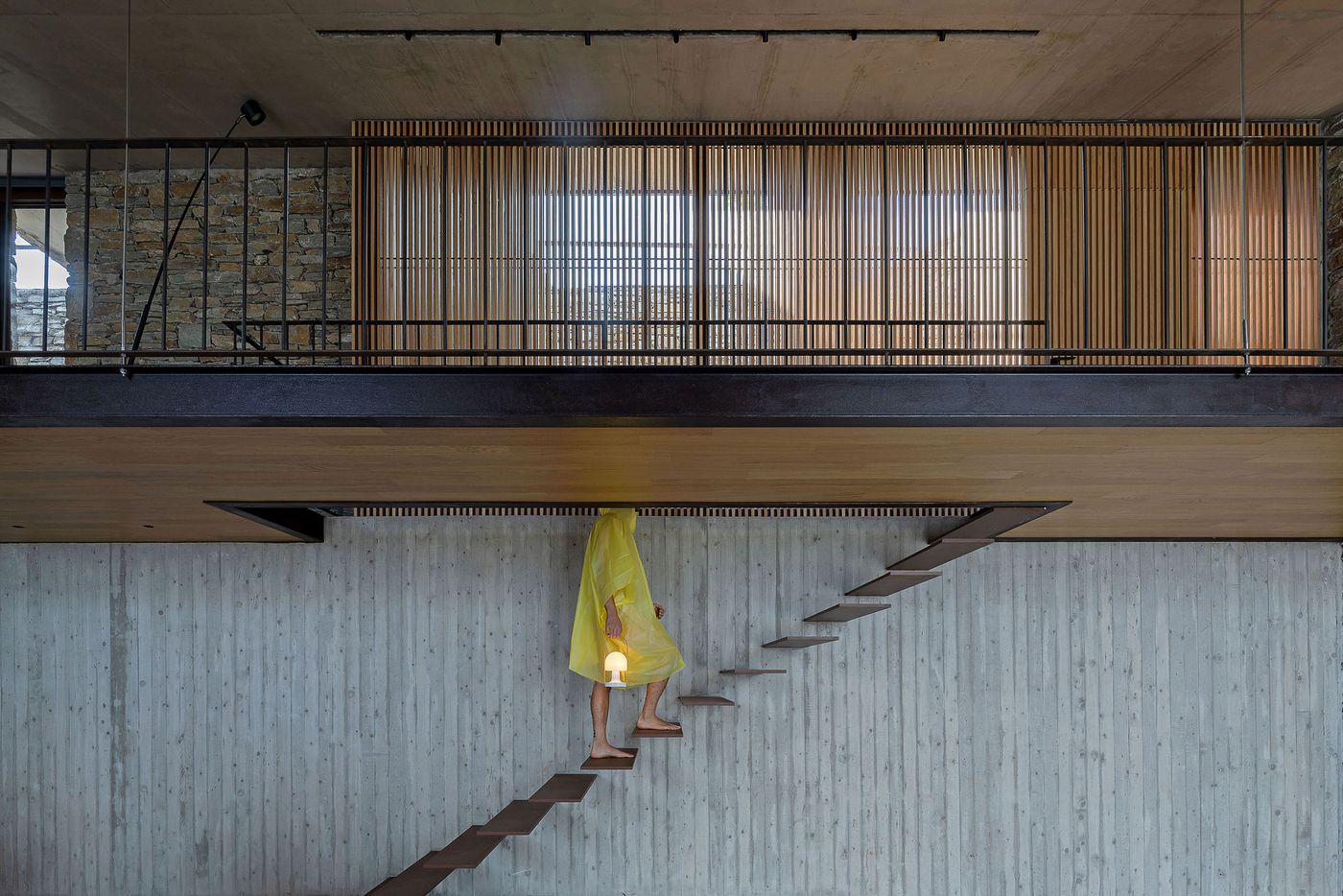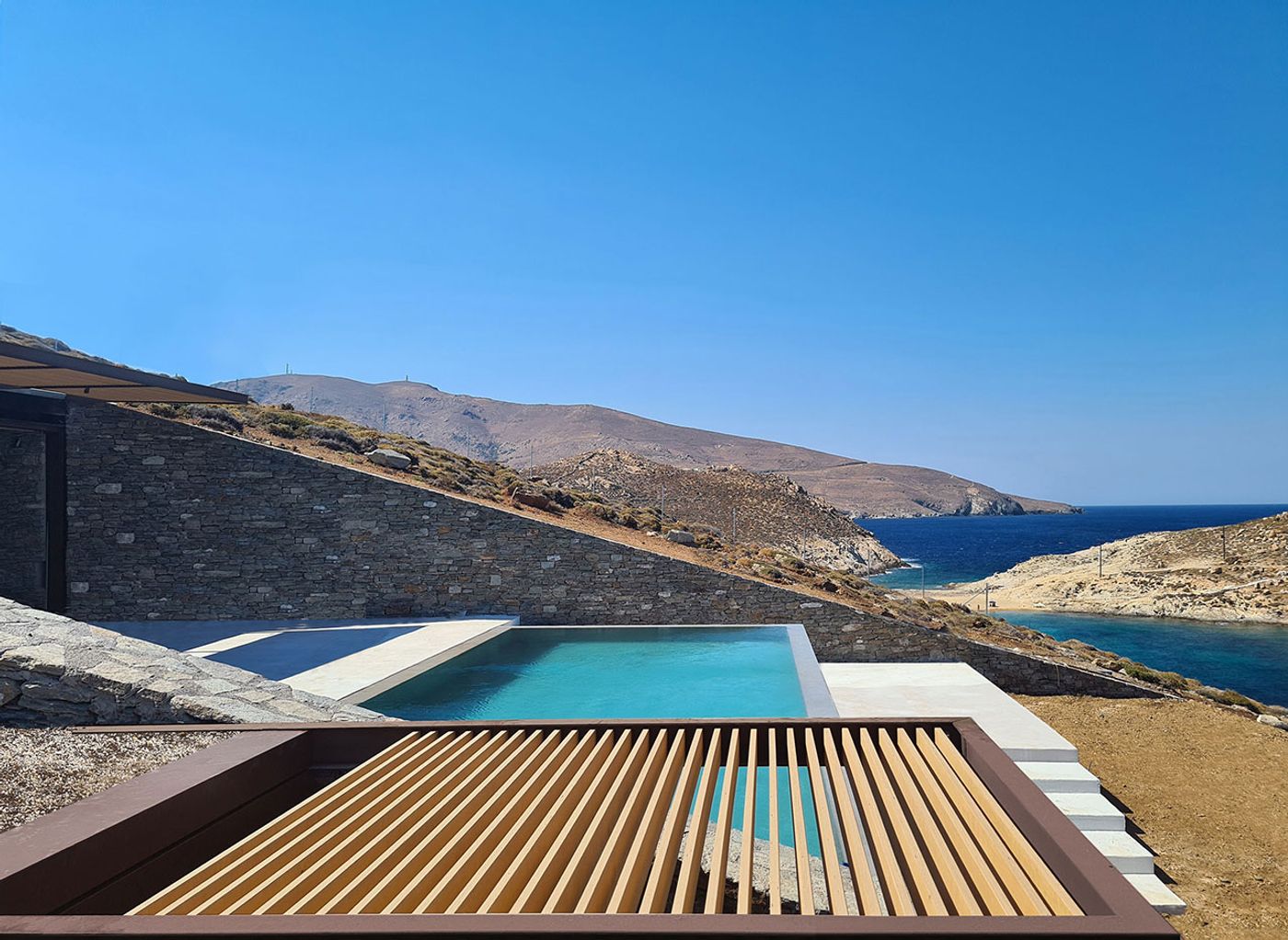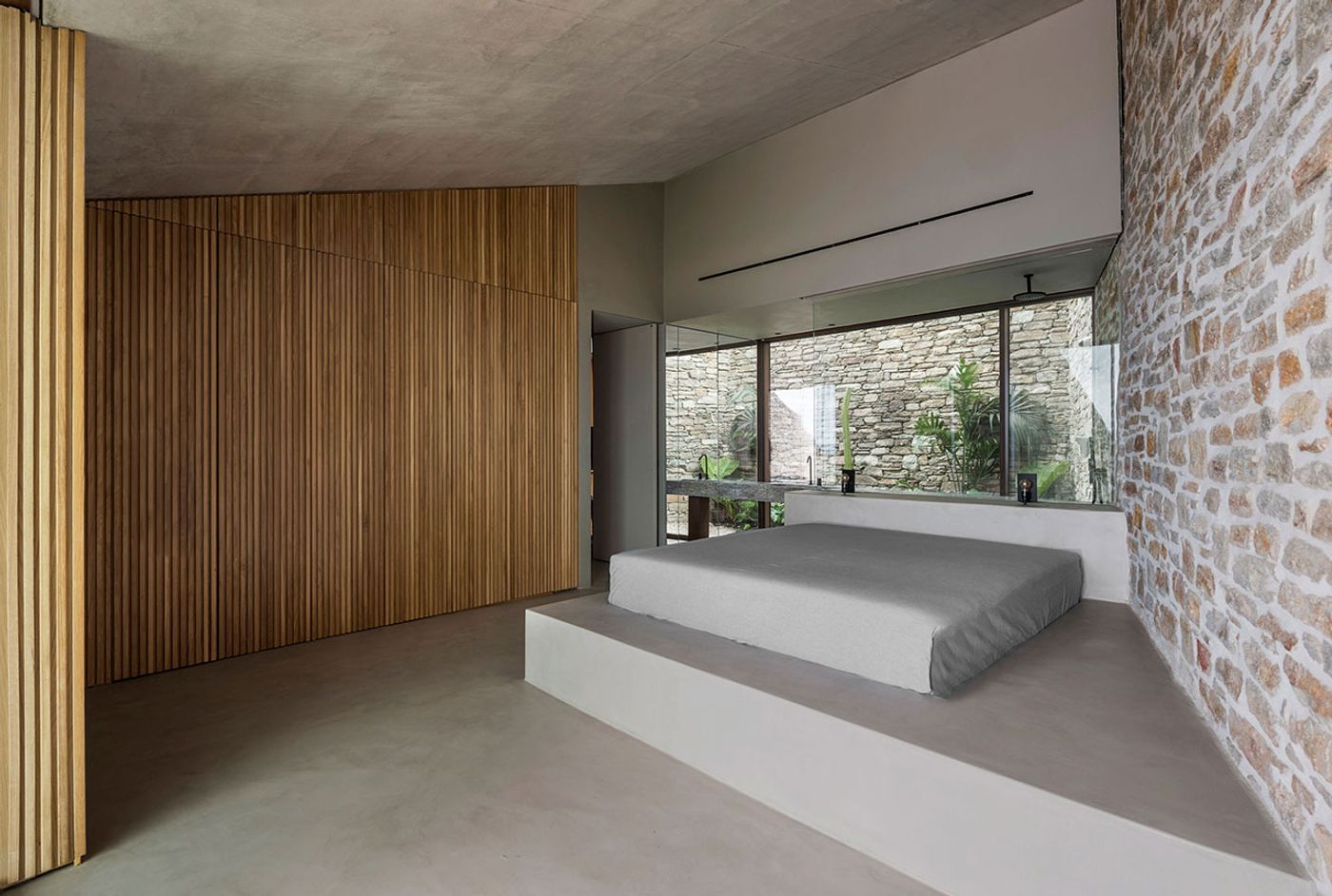A Holiday House by Mold Architects Disappears into the Rugged Landscape of Serifos
Words by Yatzer
Location
Serifos, Greece
A Holiday House by Mold Architects Disappears into the Rugged Landscape of Serifos
Words by Yatzer
Serifos, Greece
Serifos, Greece
Location
We are always delighted to come across architectural projects that are bold in conception and rich in detail yet humble in spirit as is the case of NCAVED, a holiday house on the Cycladic island of Serifos, which uncannily disappears into the rugged cliffside above a picturesque cove. Athens-based Mold Architects came up with this unorthodox architectural gesture, burying the house into the earth, in response to the location’s exposure to the elements. Their solution not only protects the house from prevailing north winds that hammer the spot, but it does so without distorting the natural landscaping or obstructing the panoramic views that the property enjoys. Paired with a contemporary, minimalist aesthetic that echoes the island’s coarse beauty, the house is both a Zen hideaway and sophisticated summer retreat.
The house unfolds on three levels with the private quarters on top, the communal areas in the middle and the guest rooms on the lower level. Fully embedded into the cliffside, the building’s wedge-shaped volume exactly matches the slope of the terrain. As a result, the terraced configuration ensures unobstructed views from all floors. Lead architect and practice founder Iliana Kerestetzi applied a three-dimensional rectangular grid, designing the house as a “chessboard” composition of solids and voids.
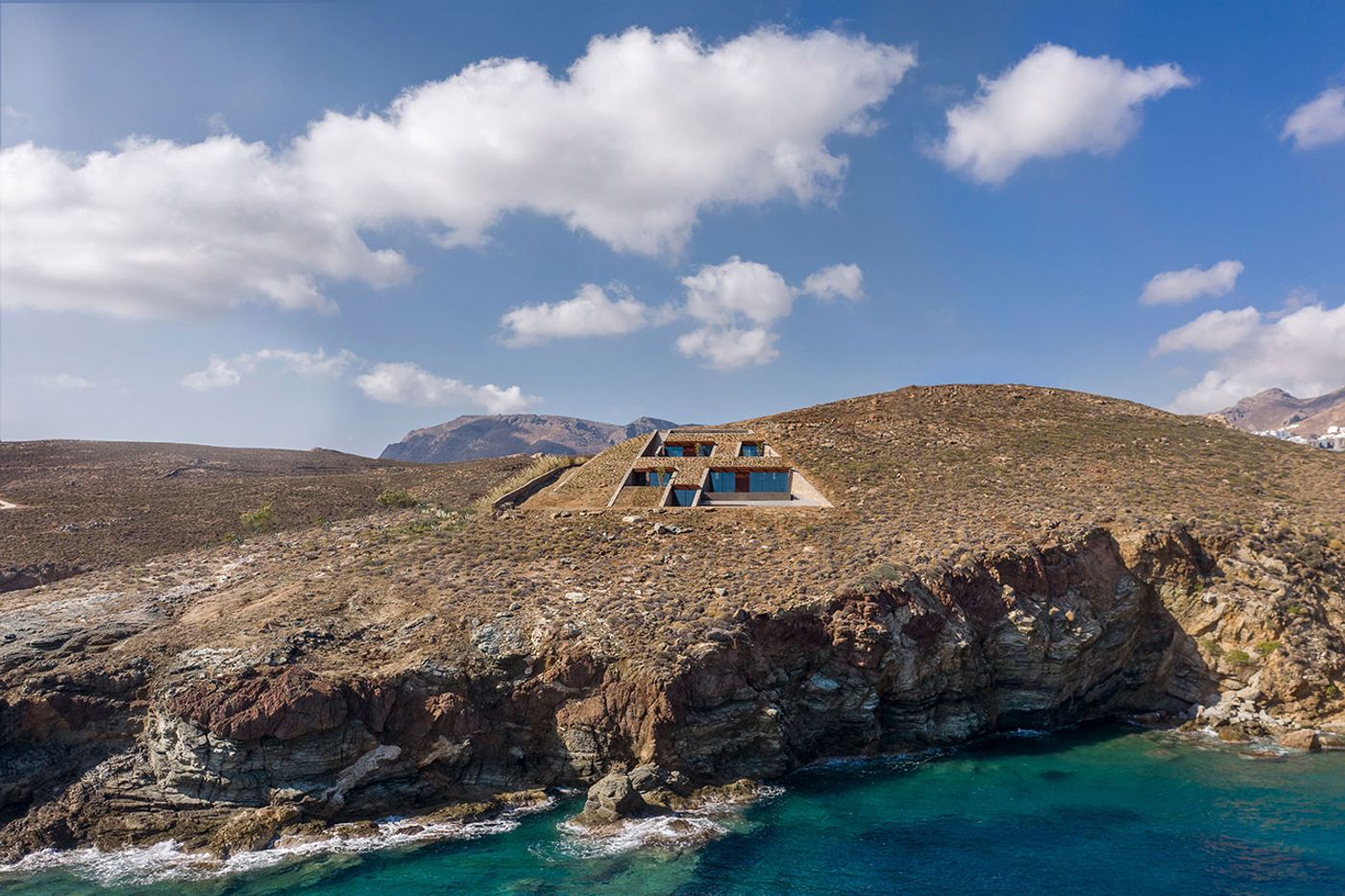
Photography by Yiorgis Yerolymbos.
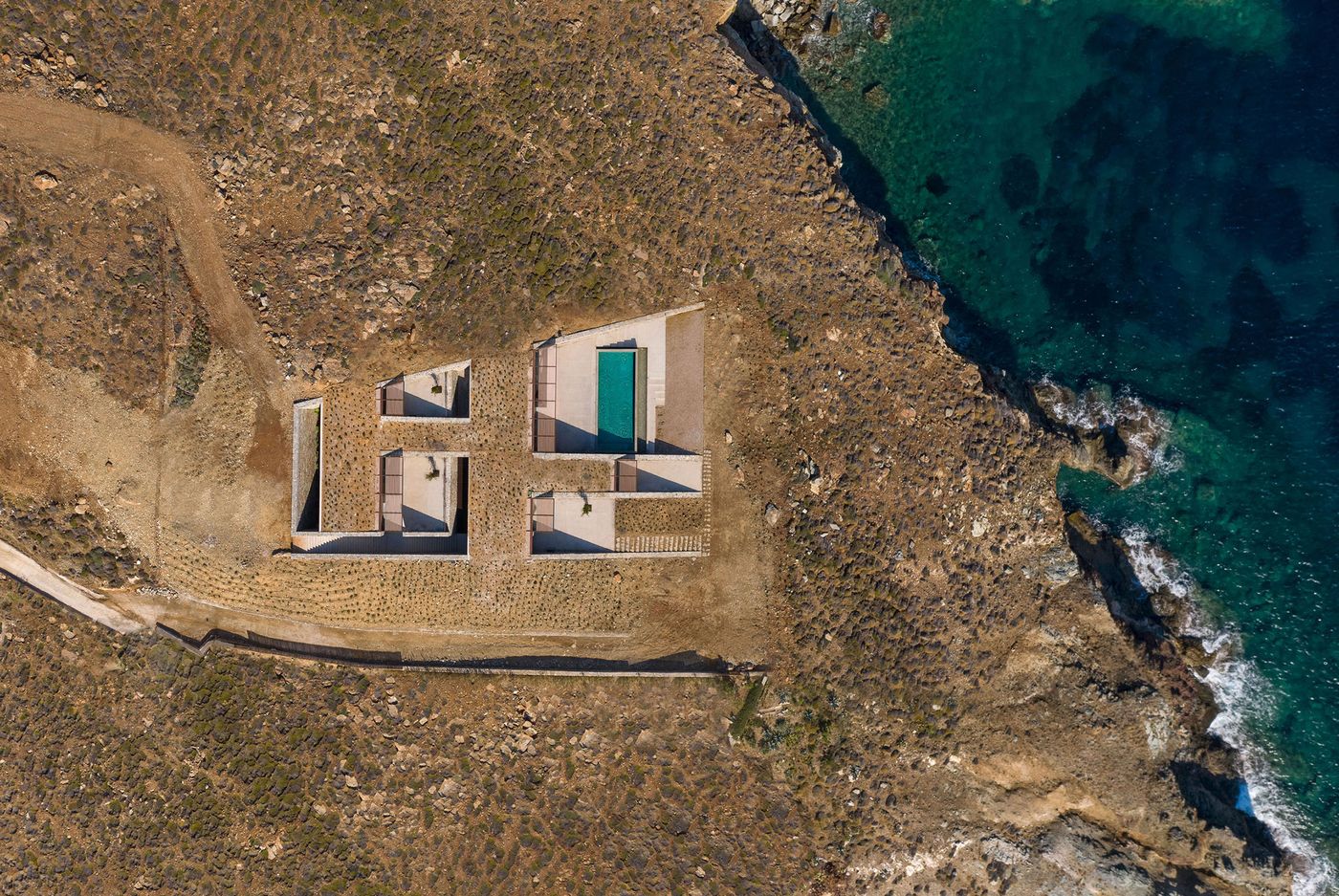
Photography by Yiorgis Yerolymbos.
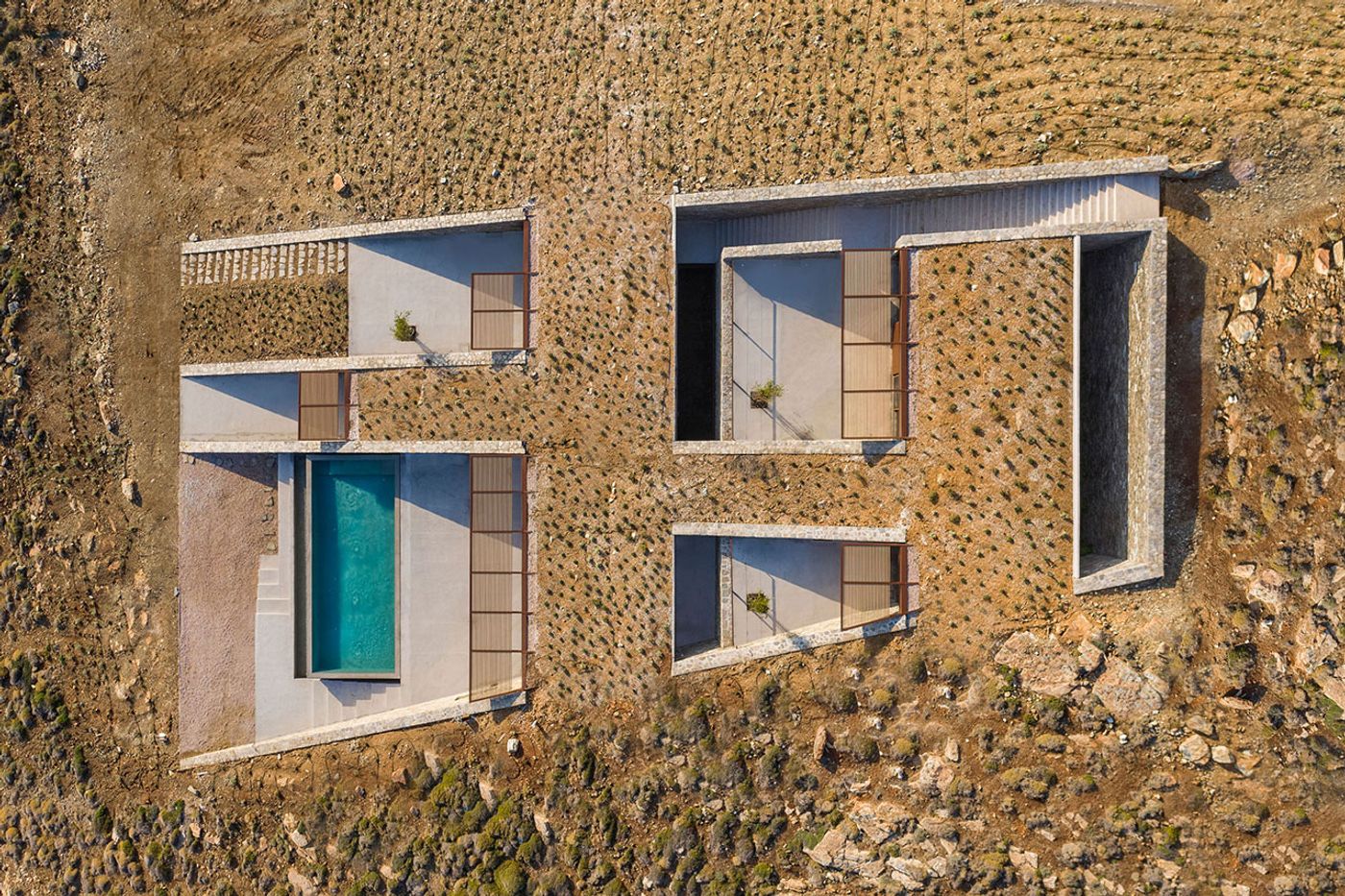
Photography by Yiorgis Yerolymbos.
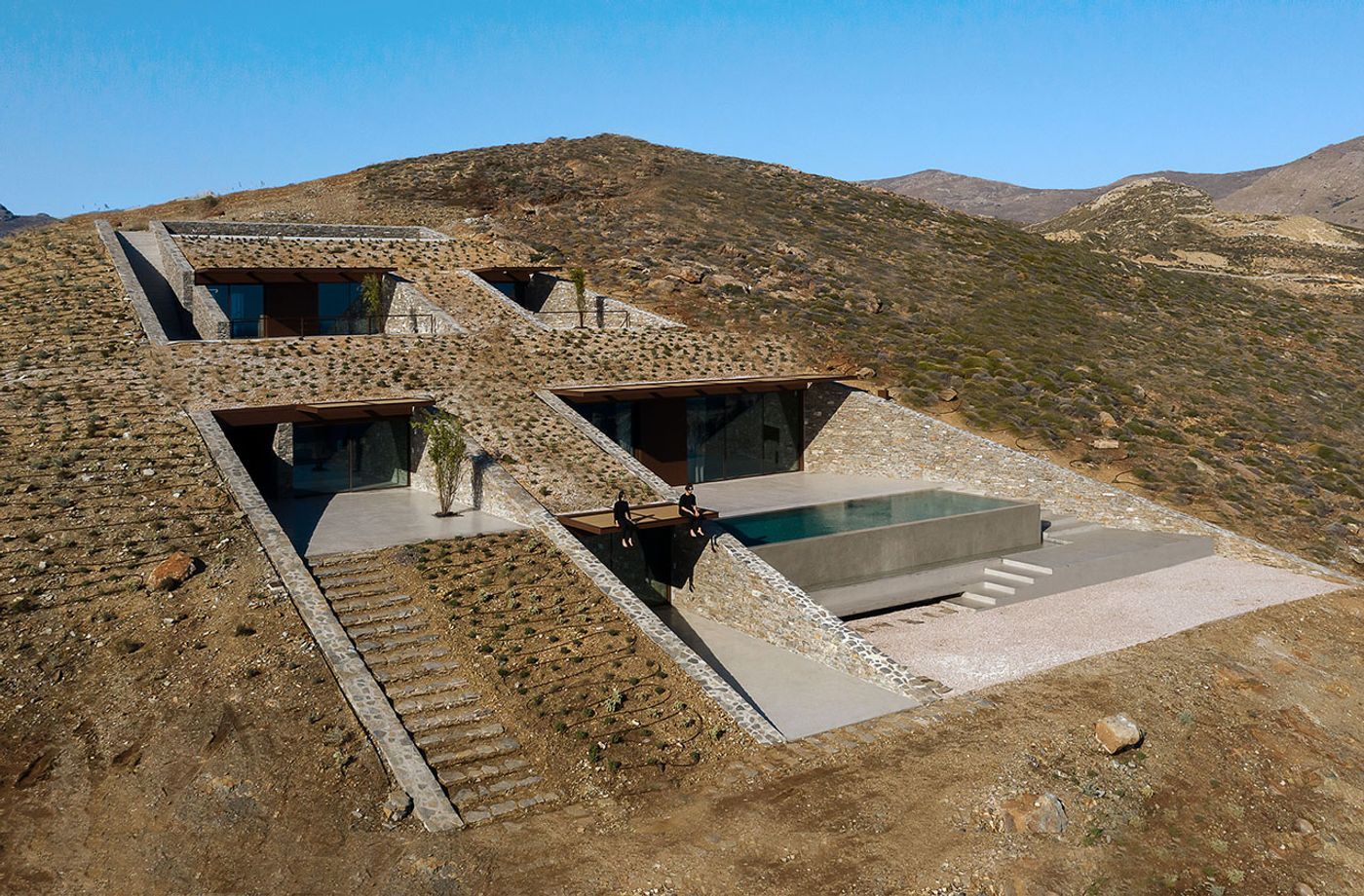
Photography by Panagiotis Voumvakis.
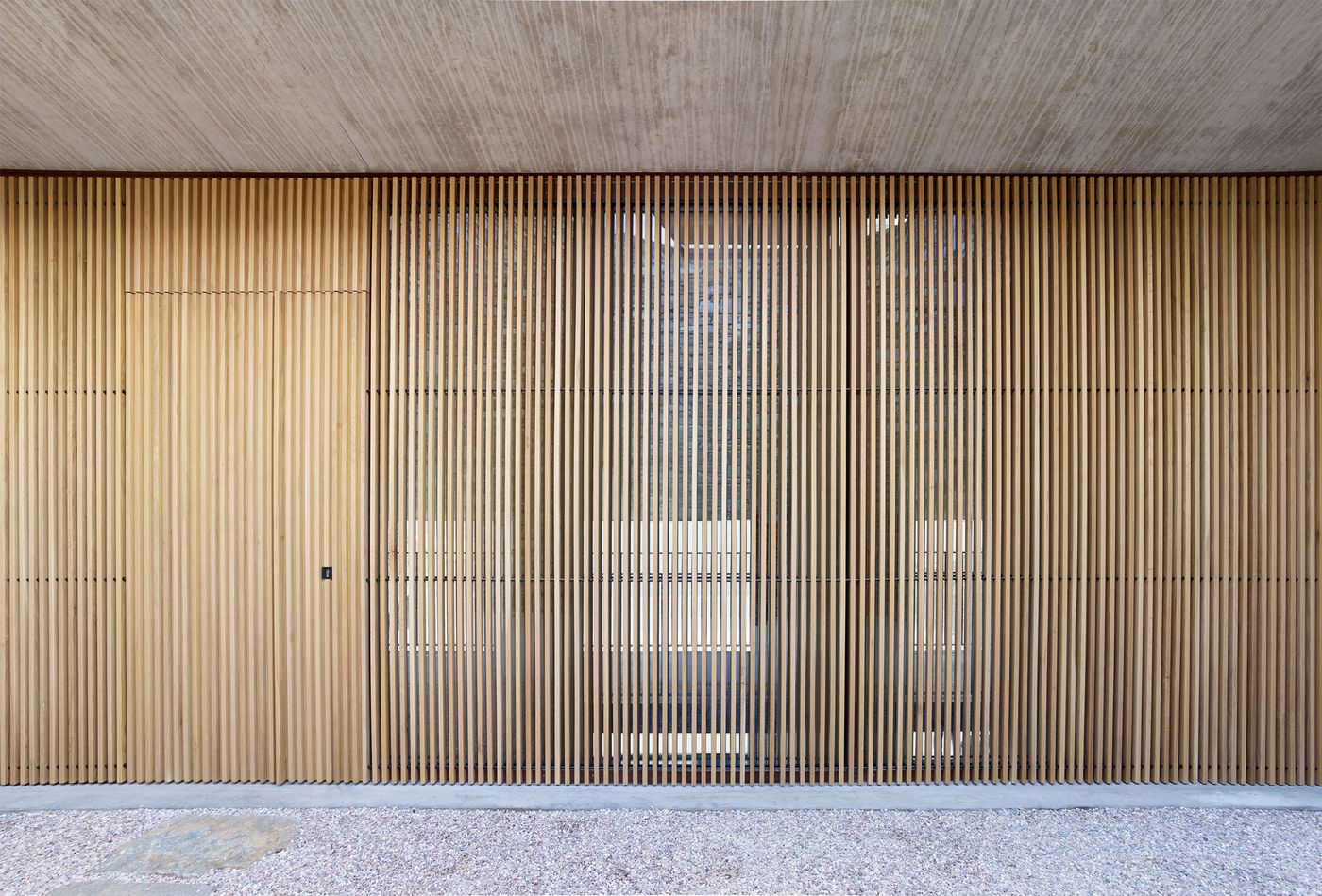
Photography by Yiorgis Yerolymbos.

Photography by Yiorgis Yerolymbos.
Echoing the local vernacular, dry stone retaining walls firmly anchor the house into the cliffside and subdivide the interior and exterior areas into distinct rooms, patios and terraces. In combination with the planted roof sections, the dry-stone walls also enable the house to harmoniously blend in with the natural surroundings, as well as guide the gaze down the slope towards the sea. In contrast, the sea-facing sections of the building are completely glazed in order to maximize views and natural lighting, as well as connect the interior spaces with the adjoining terraces. To ensure that natural lighting reaches the back of the building, Kerestetzi added light wells that also function as planted courtyards.
Underpinned by a minimalist aesthetic of clean lines and sparse furnishings, the interior design is inspired by the house’s subterranean nature, featuring a subdued palette of earthy colours, coarse textures and natural materials such as stone, exposed concrete and metal. Timber accents add warmth while the use of perforated and reflective surfaces animate the spaces with an ever-shifting play of light and shadow.
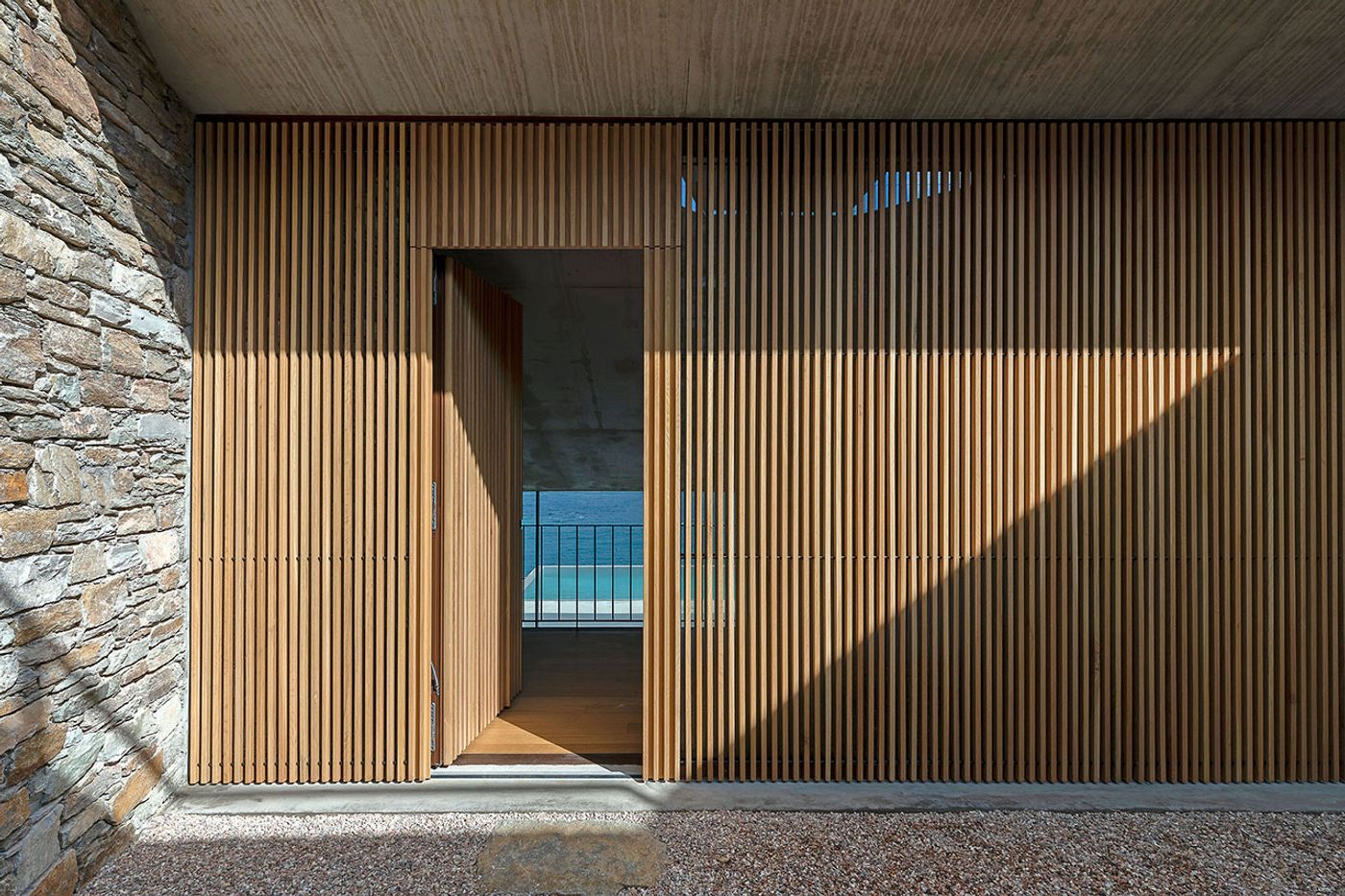
Photography by Yiorgis Yerolymbos.
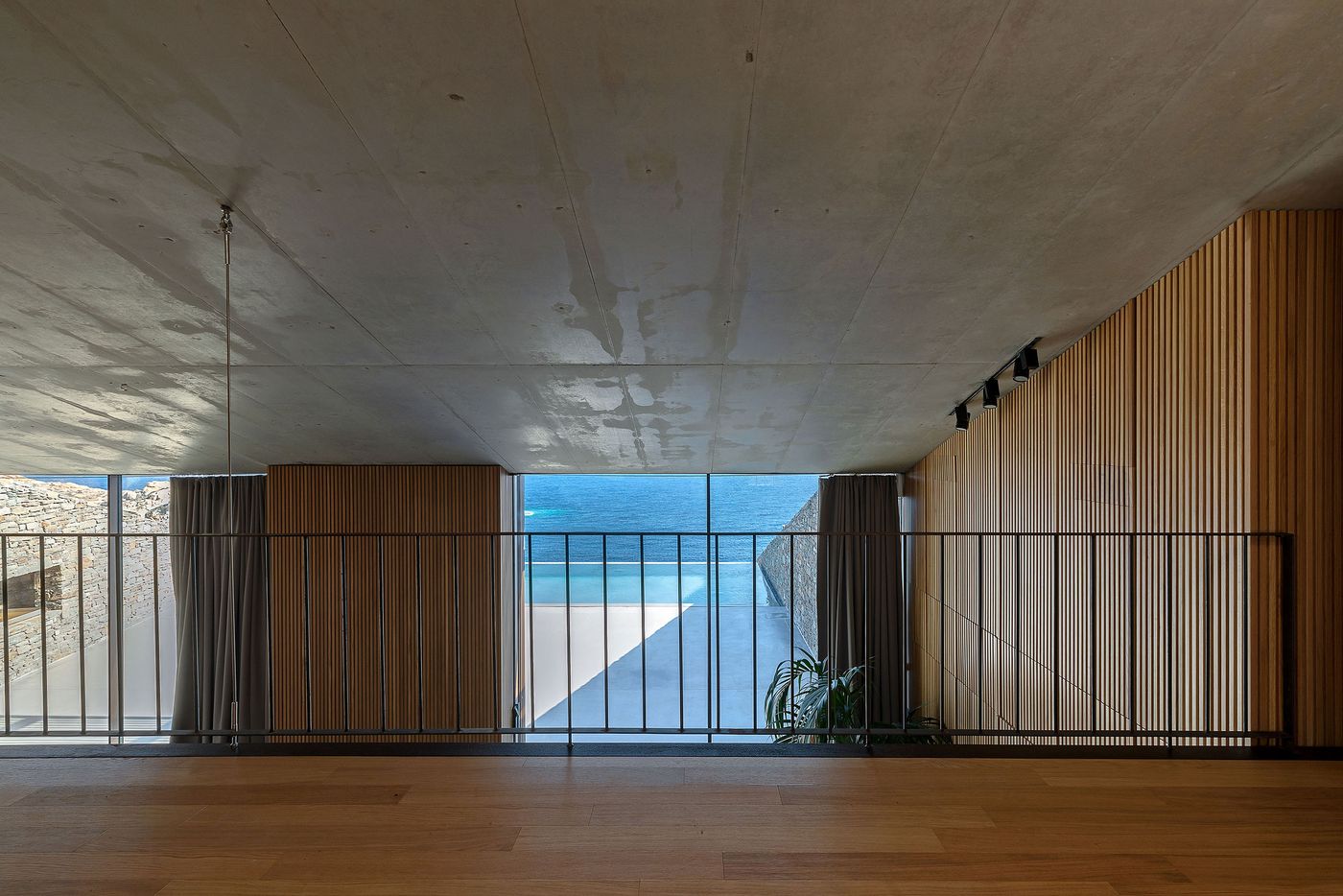
Photography by Panagiotis Voumvakis.
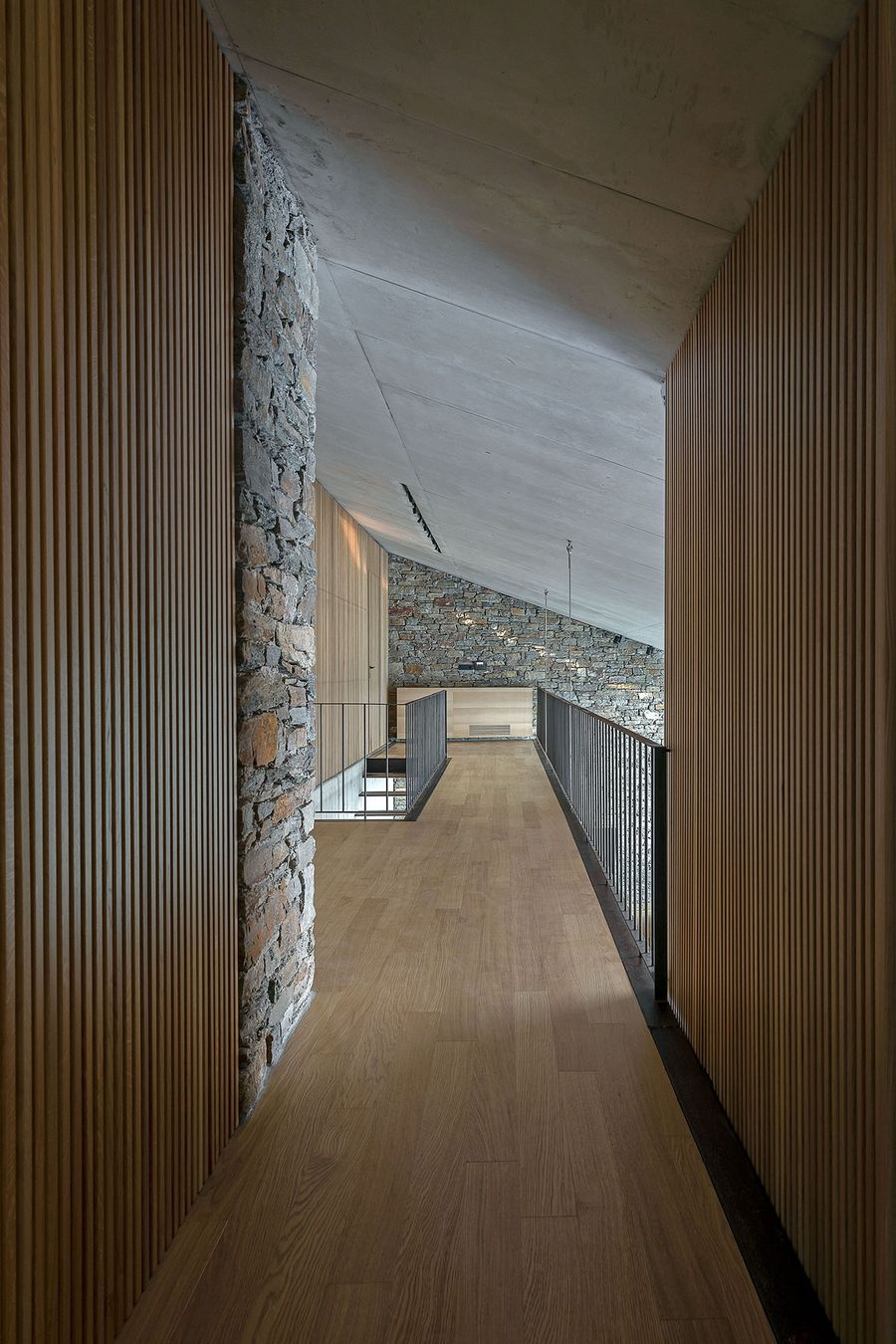
Photography by Panagiotis Voumvakis.

Photography by Yiorgis Yerolymbos.
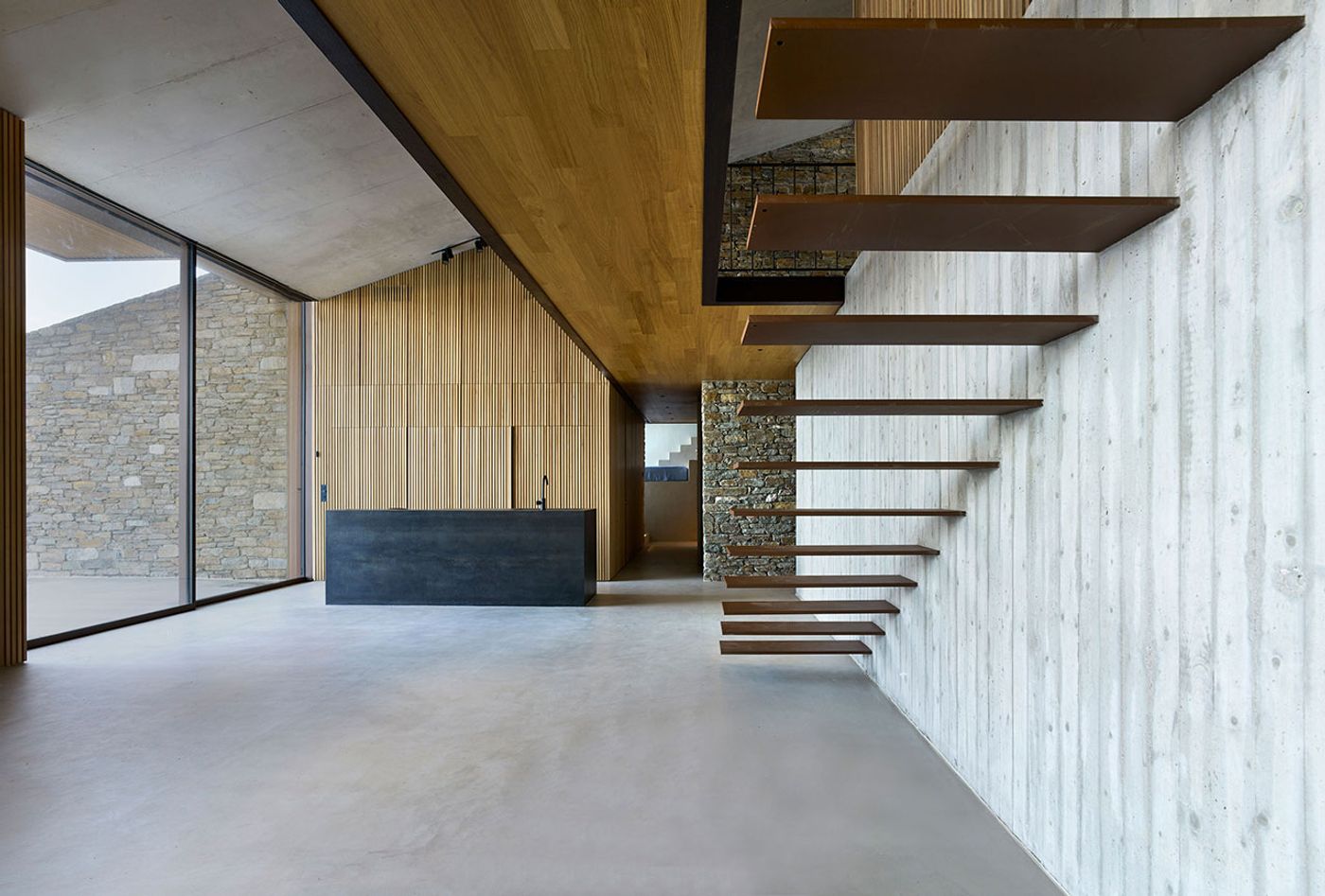
Photography by Yiorgis Yerolymbos.

Photography by Yiorgis Yerolymbos.

Photography by Panagiotis Voumvakis.
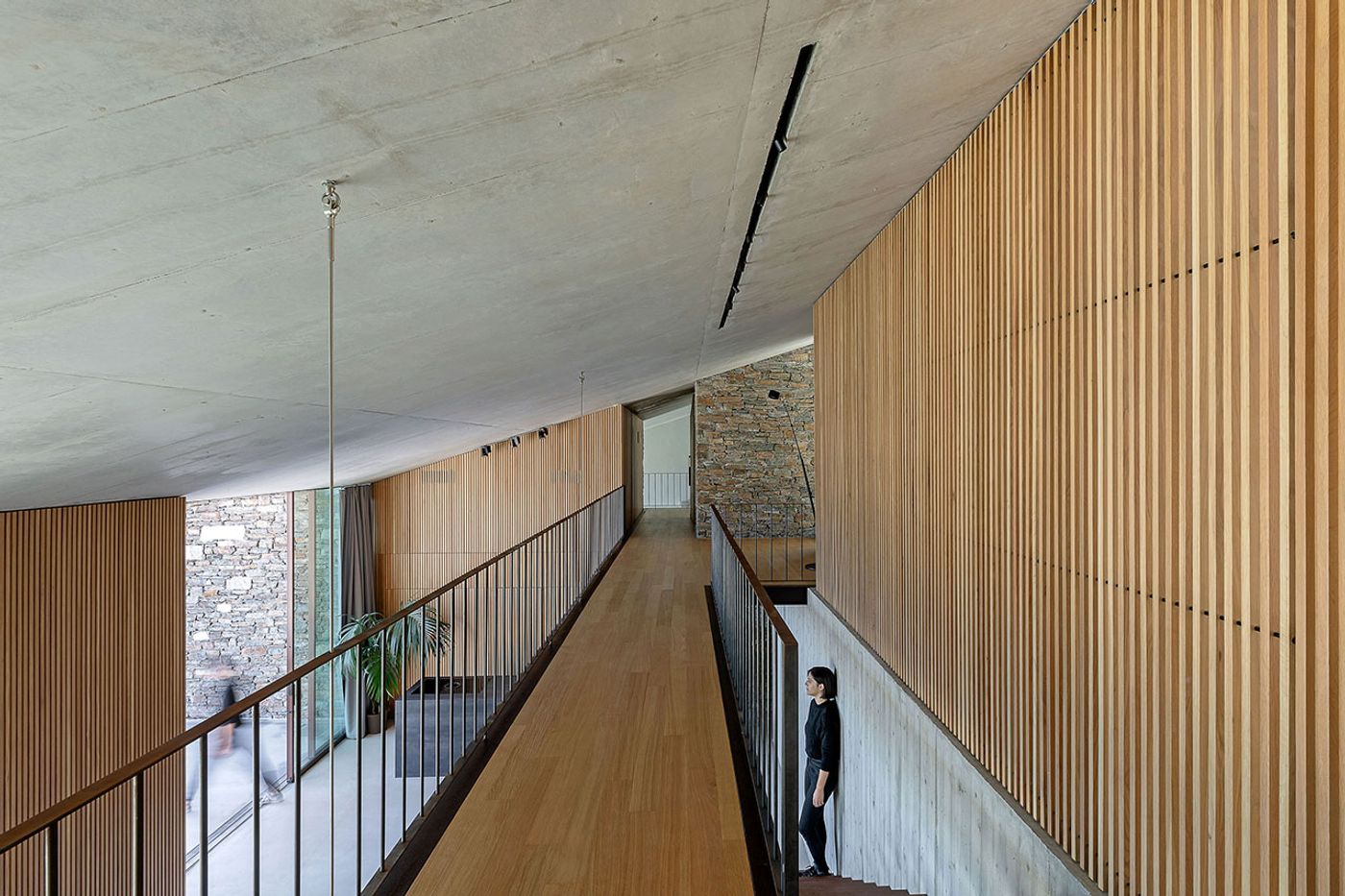
Photography by Panagiotis Voumvakis.
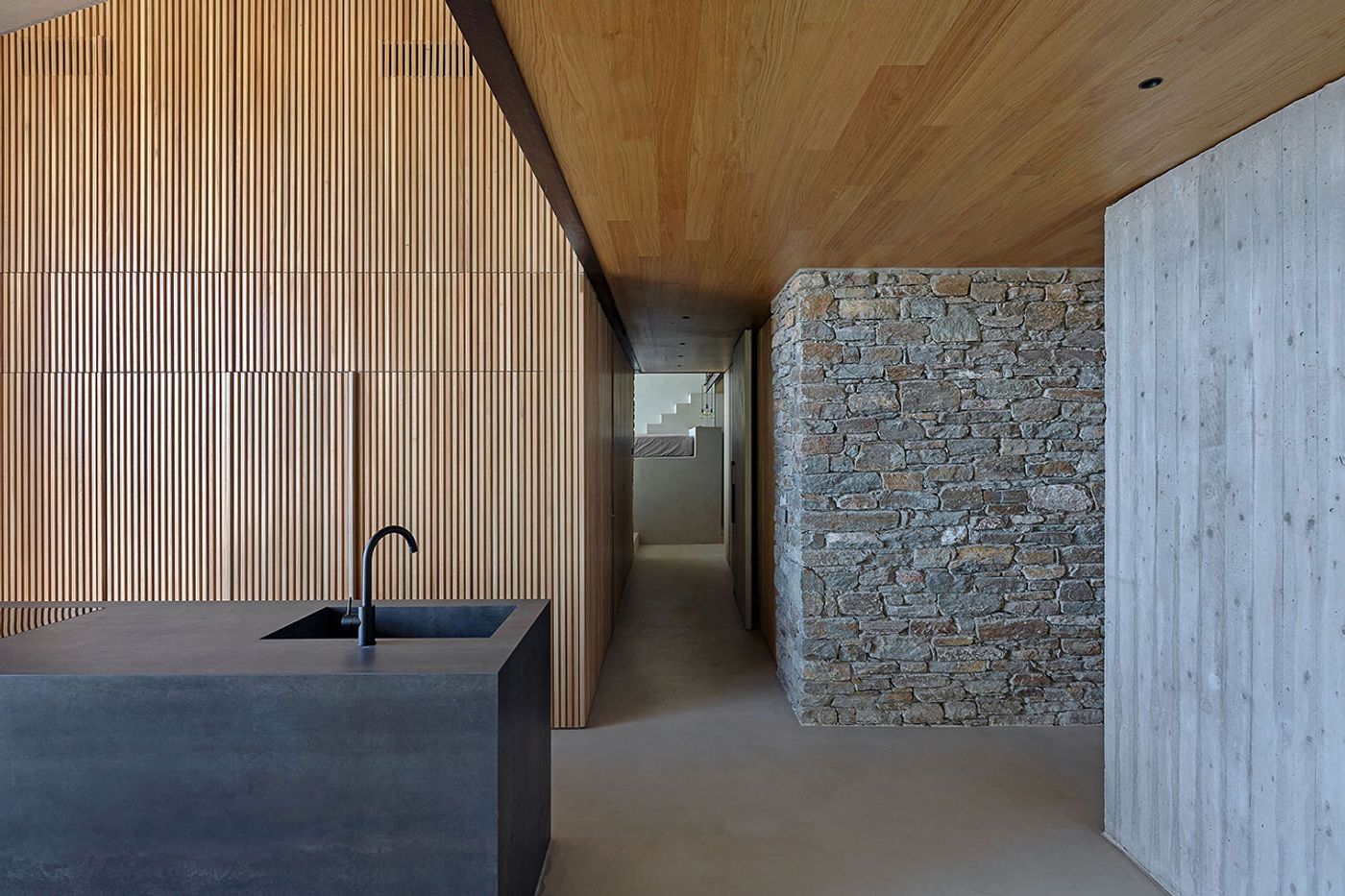
Photography by Panagiotis Voumvakis.
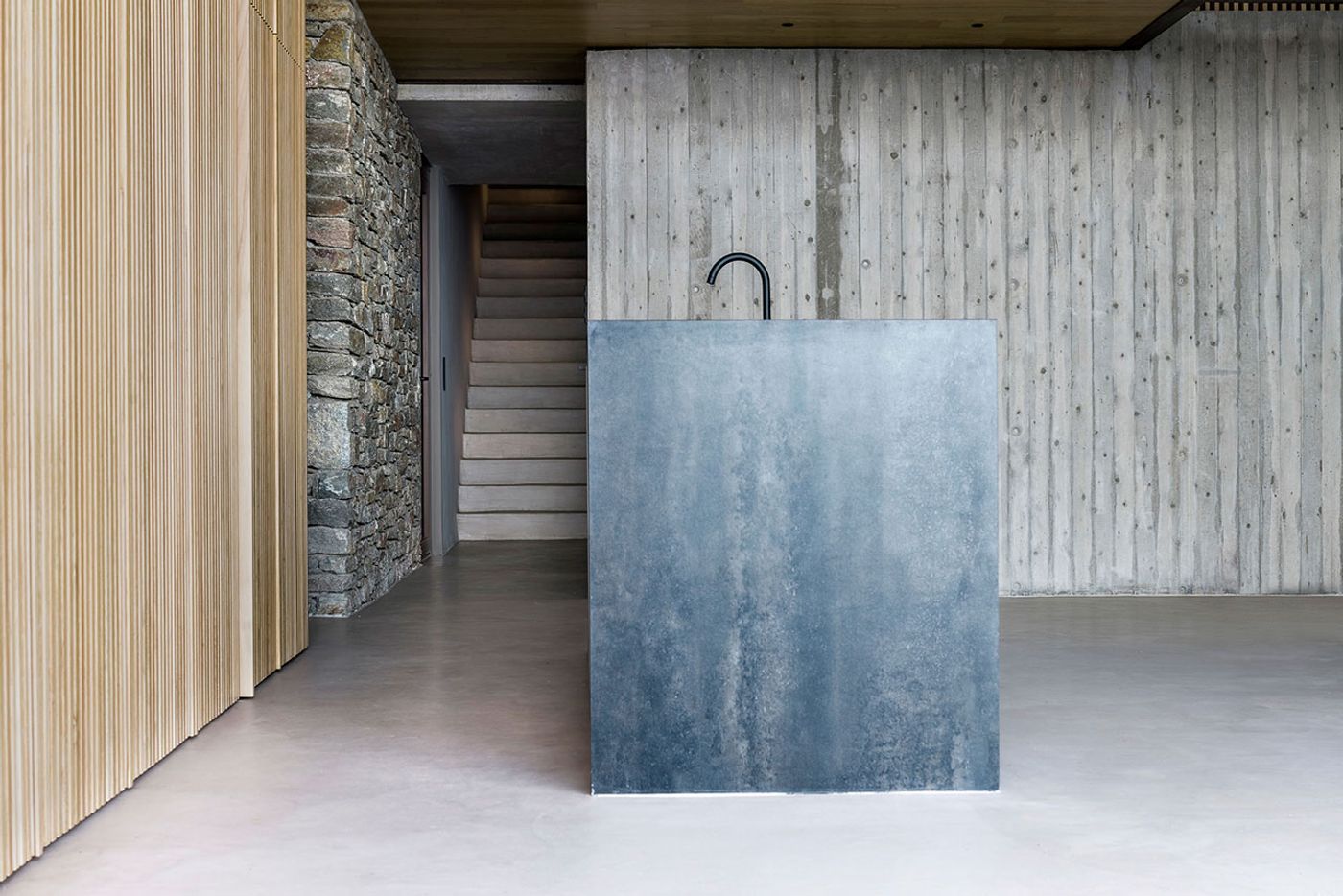
Photography by Yiorgis Yerolymbos.
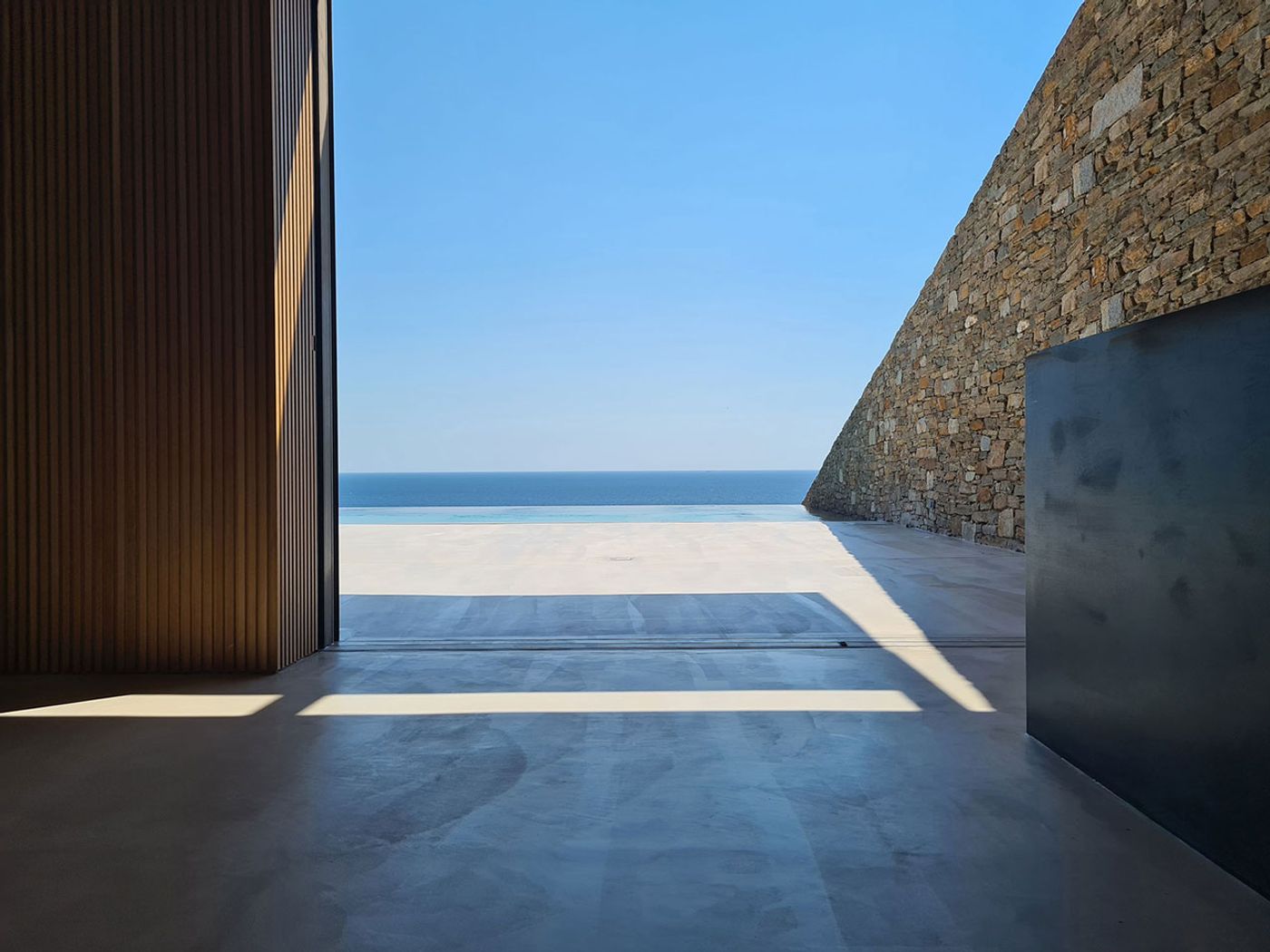
Photography by MOLD Architects.
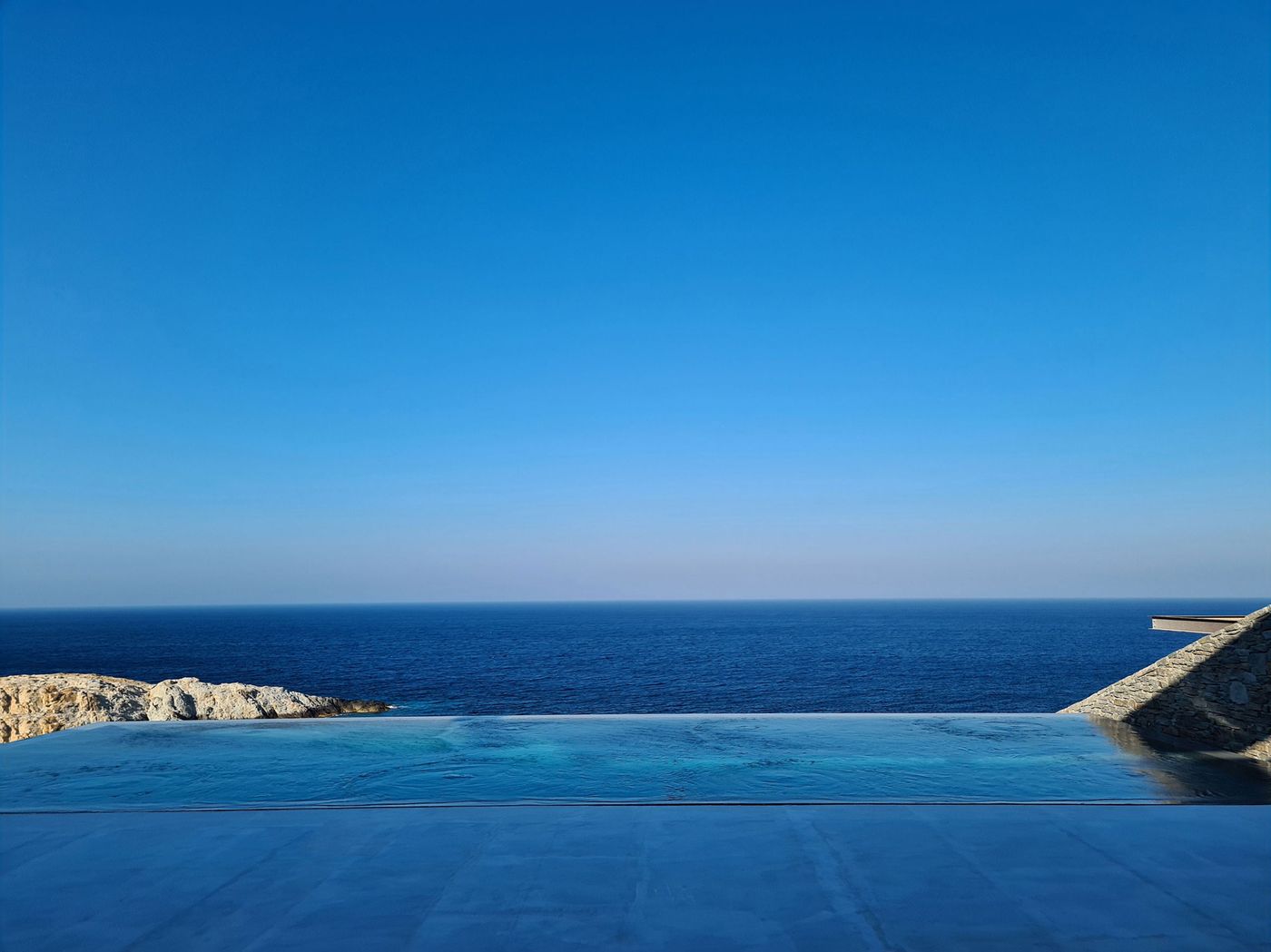
Photography by MOLD Architects.
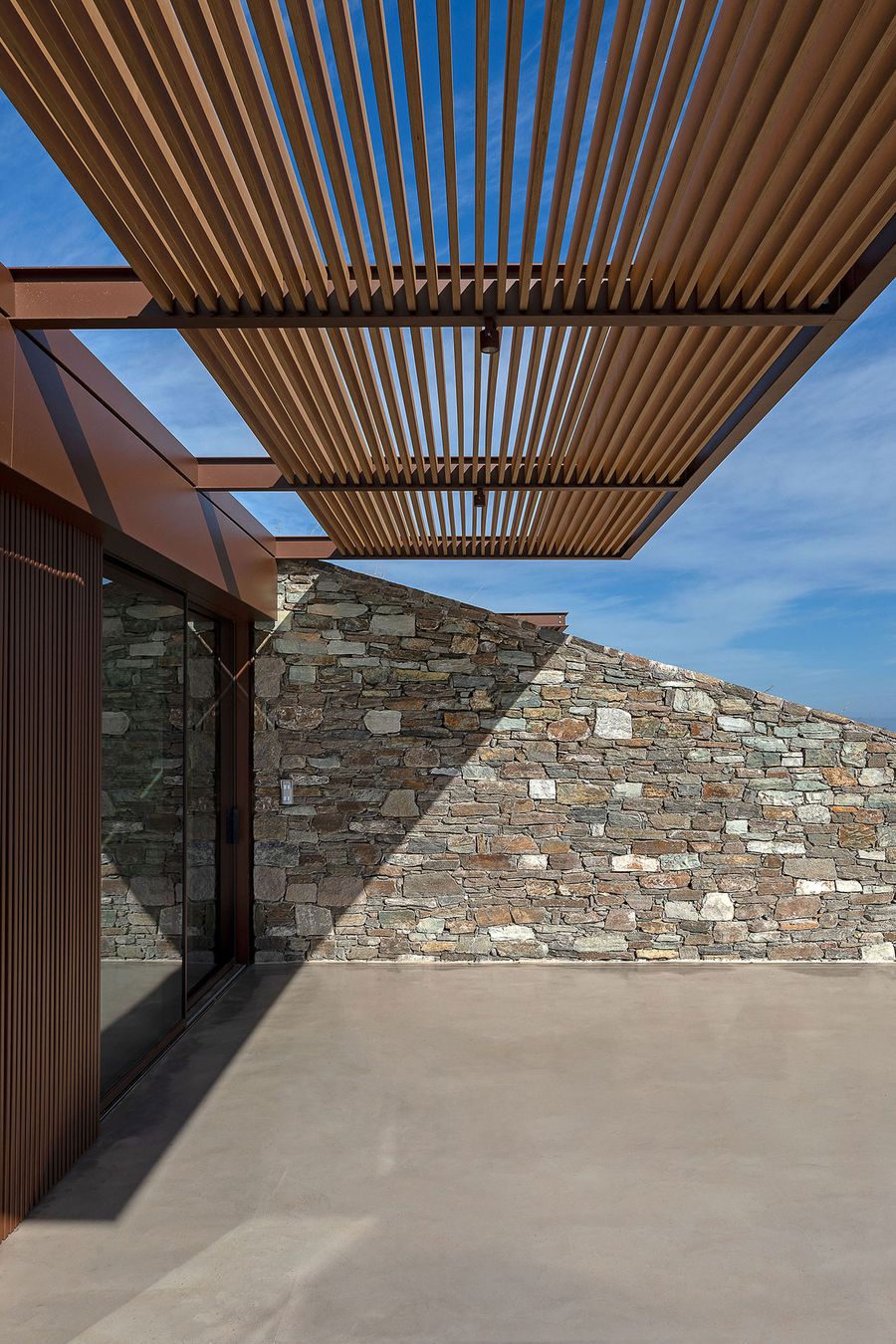
Photography by Panagiotis Voumvakis.
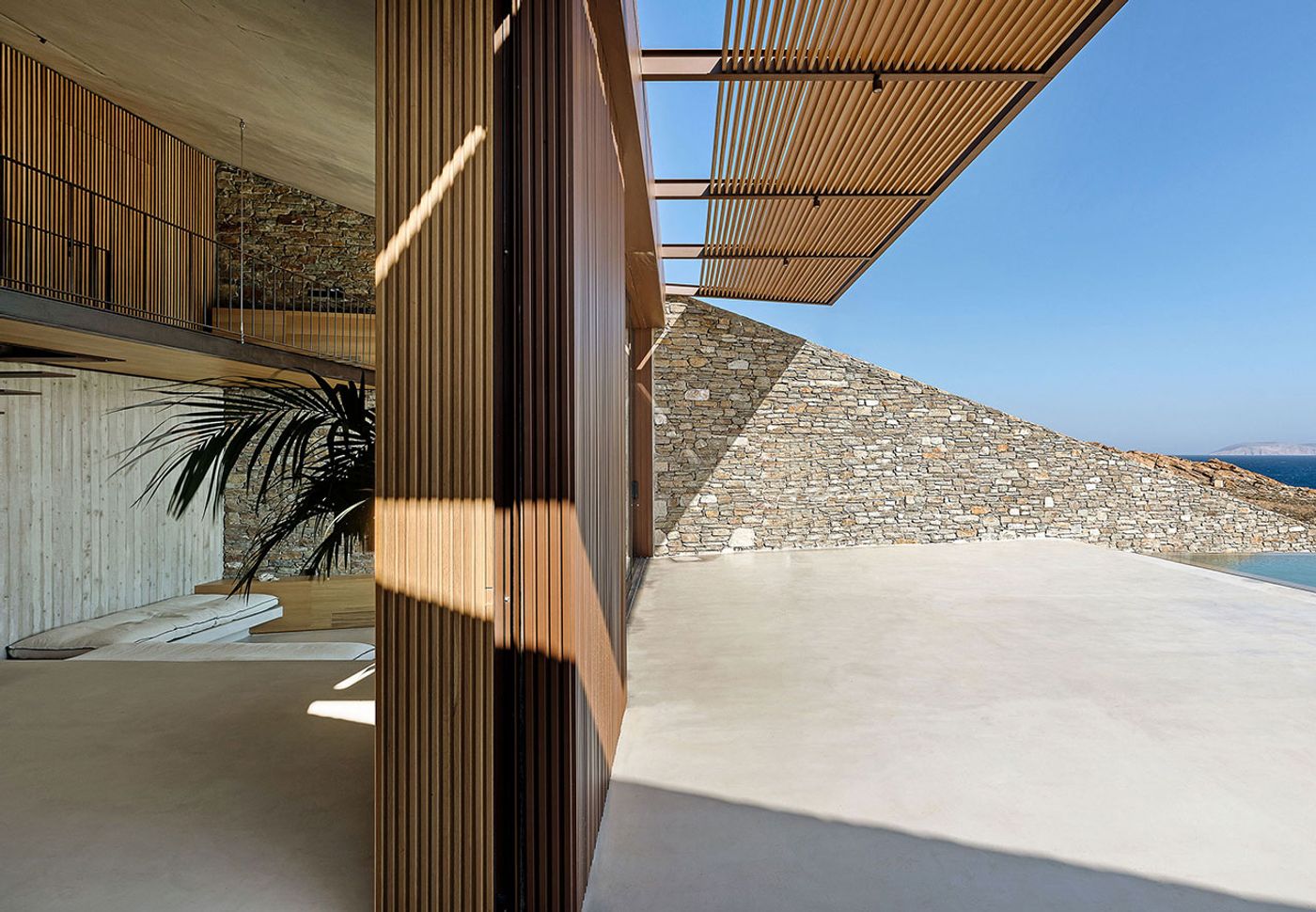
Photography by Panagiotis Voumvakis.
An external staircase connecting all three levels is designed as a ceremonial passage slowly revealing a sequence of spaces while framing vertiginous views of the sea as you descend and gradually expanding views of the sky as you ascend. In fact, every space is design to frame different views, from panoramic islands vistas in the open-plan living and dining room, to cropped views of the sea and sky from the bedrooms.
As expected from a house that does not burden the natural landscape with its physical presence, sustainability was a key aspect of its design. Natural ventilation and thermal mass facilitate passive cooling, energy-efficient glazing while adequate insulation minimize energy demands, and collected wastewater and rainwater is used for irrigation. With features such as these, it’s fair to say that the house is firmly embedded both in the ground and into its natural surroundings.

Photography by MOLD Architects.
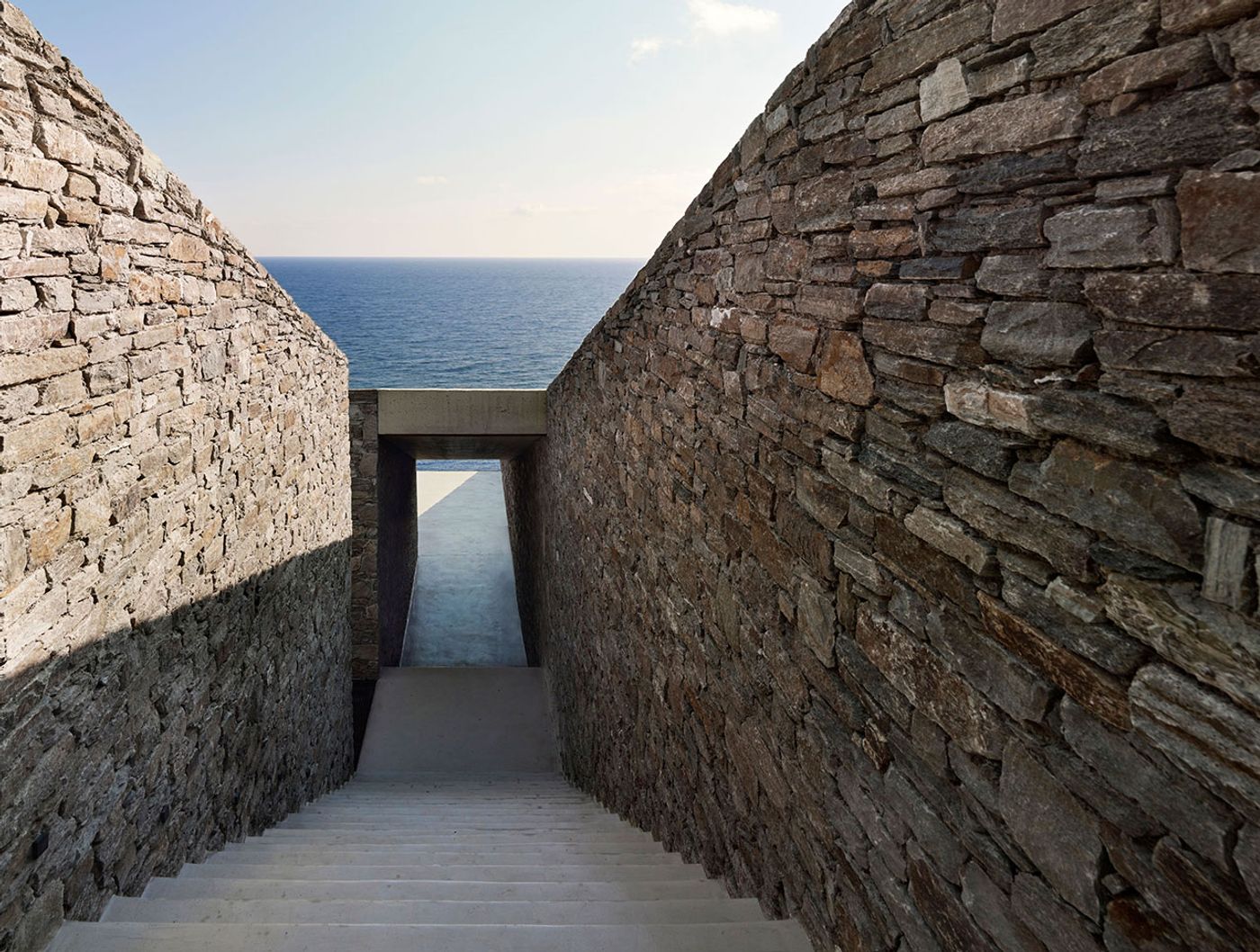
Photography by Yiorgis Yerolymbos.
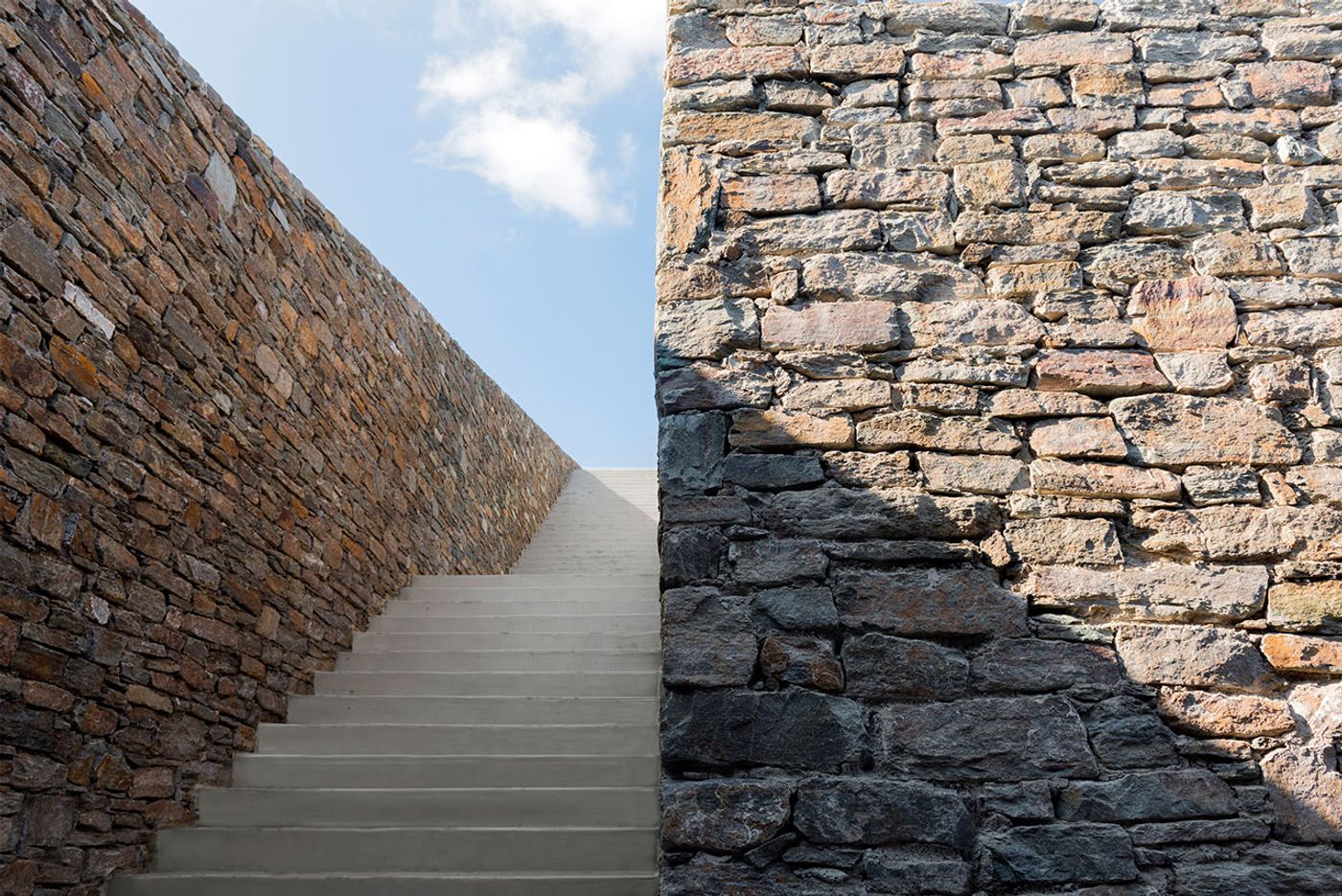
Photography by Yiorgis Yerolymbos.
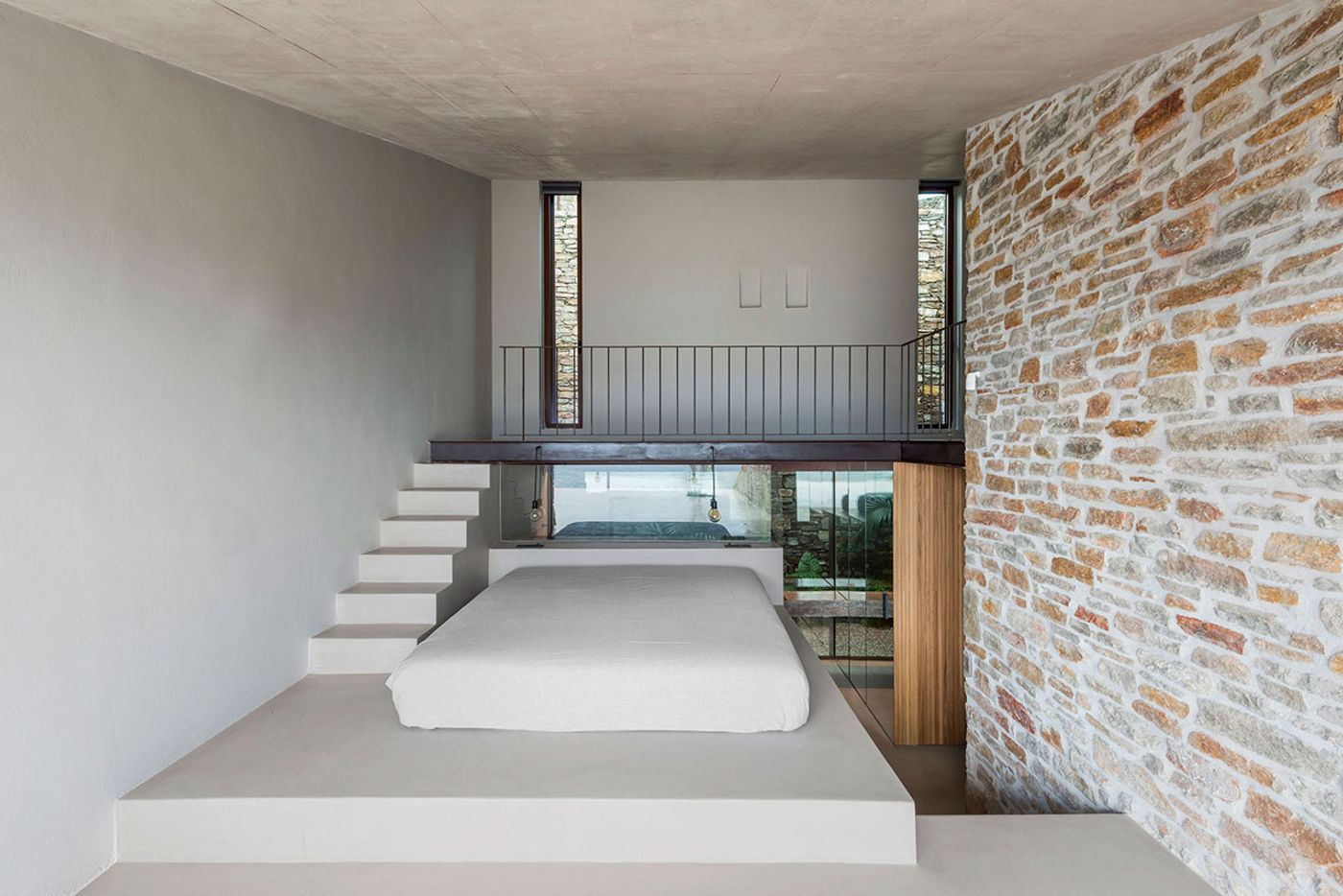
Photography by Yiorgis Yerolymbos.
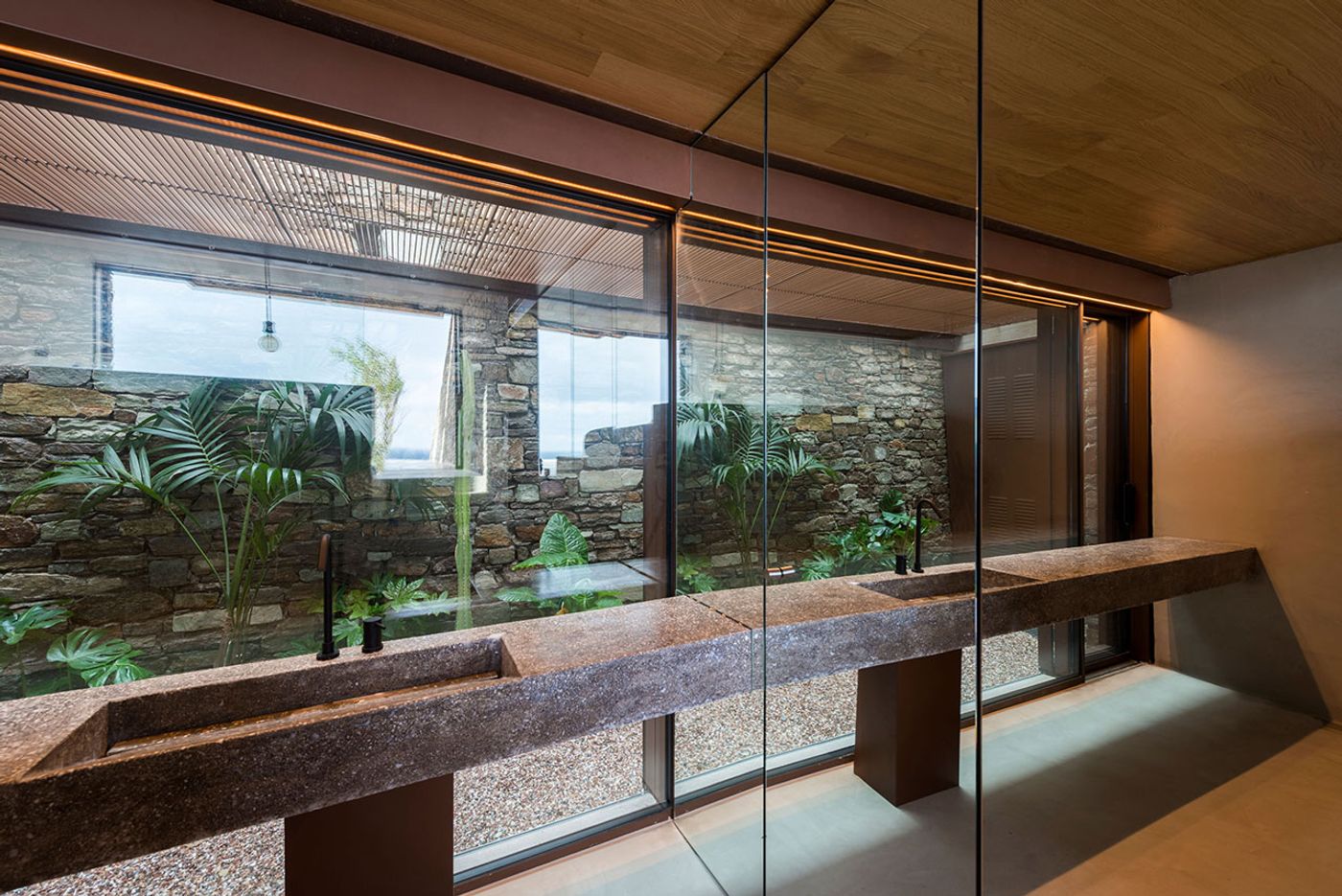
Photography by Yiorgis Yerolymbos.

Photography by Panagiotis Voumvakis.
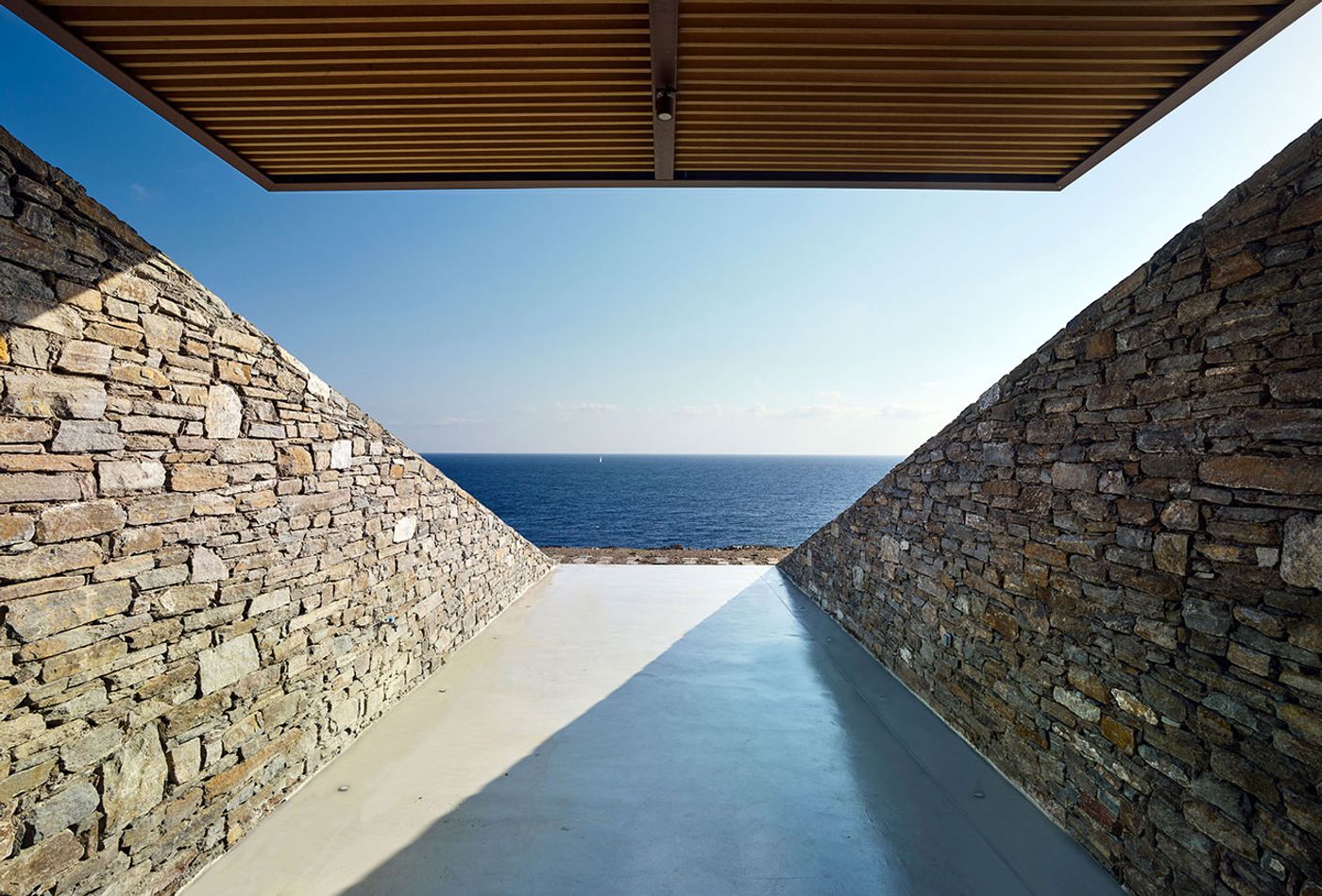
Photography by Yiorgis Yerolymbos.

Photography by Panagiotis Voumvakis.
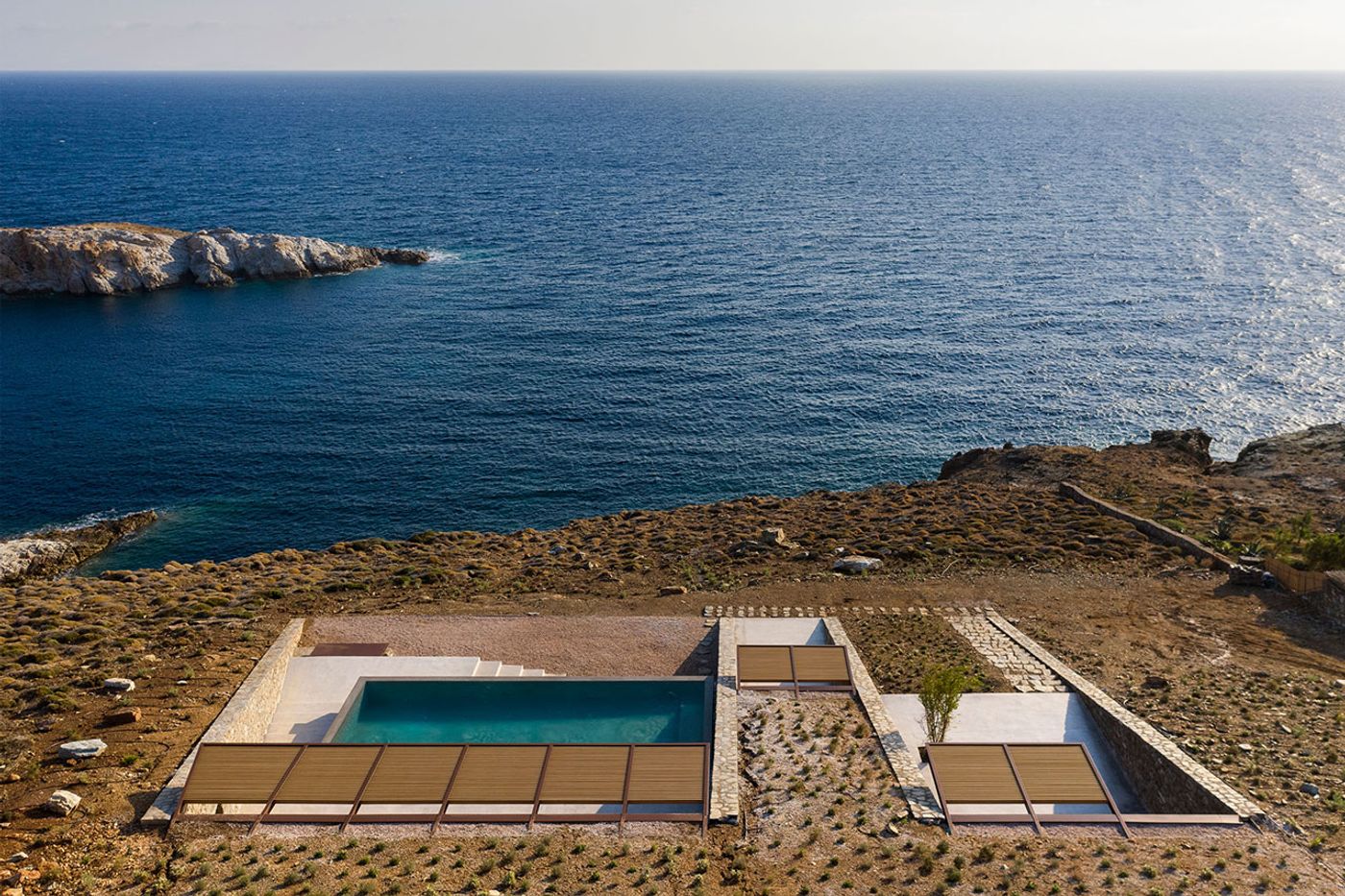
Photography by Yiorgis Yerolymbos.

Photography by Yiorgis Yerolymbos.
